-
 bitcoin
bitcoin $106680.127705 USD
0.67% -
 ethereum
ethereum $3615.722480 USD
-0.65% -
 tether
tether $0.999925 USD
-0.04% -
 xrp
xrp $2.550072 USD
5.91% -
 bnb
bnb $1002.572269 USD
-0.90% -
 solana
solana $168.746669 USD
1.08% -
 usd-coin
usd-coin $0.999832 USD
-0.03% -
 tron
tron $0.297244 USD
1.97% -
 dogecoin
dogecoin $0.182965 USD
0.71% -
 cardano
cardano $0.600432 USD
2.56% -
 hyperliquid
hyperliquid $41.439691 USD
-1.57% -
 chainlink
chainlink $16.548399 USD
2.40% -
 bitcoin-cash
bitcoin-cash $524.993680 USD
3.45% -
 stellar
stellar $0.302259 USD
4.10% -
 zcash
zcash $539.994871 USD
-16.31%
How to operate DMI when it is sideways? Should I wait and see when ADX is below 20?
In a sideways crypto market, use DMI crossovers for short-term trades within the range, and monitor ADX below 20 for potential breakouts.
May 23, 2025 at 07:21 pm
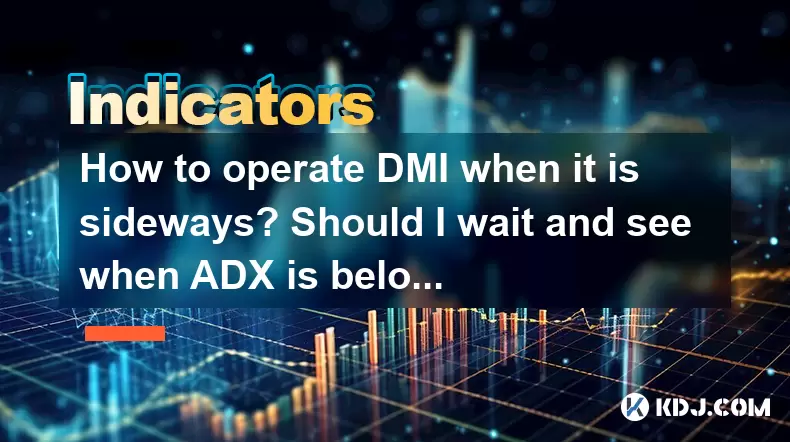
In the world of cryptocurrency trading, technical analysis tools like the Directional Movement Index (DMI) and the Average Directional Index (ADX) play crucial roles in helping traders make informed decisions. When the market is moving sideways, understanding how to interpret and use these indicators becomes essential. This article will explore how to operate the DMI in a sideways market and whether you should wait and see when the ADX is below 20.
Understanding DMI and ADX in a Sideways Market
The Directional Movement Index (DMI) consists of two lines: the Positive Directional Indicator (+DI) and the Negative Directional Indicator (-DI). These lines help traders identify the direction of the market's trend. The Average Directional Index (ADX) measures the strength of the trend, regardless of its direction. When the market is moving sideways, the ADX typically remains below 20, indicating a weak trend.
In a sideways market, the +DI and -DI lines will often cross each other frequently, signaling that there is no clear directional movement. This can be challenging for traders who rely on trend-following strategies. However, understanding how to navigate these conditions can still provide valuable insights.
Operating DMI in a Sideways Market
When the market is moving sideways, the DMI can still be a useful tool if you know how to interpret it correctly. Here are some strategies for operating the DMI in a sideways market:
Look for Crossovers: Even in a sideways market, the +DI and -DI lines will cross each other. These crossovers can signal short-term directional changes within the sideways movement. For example, if the +DI crosses above the -DI, it may indicate a short-term bullish movement within the sideways range.
Monitor the Range: In a sideways market, the price will typically oscillate within a defined range. Using the DMI, you can identify potential entry and exit points within this range. For instance, if the price approaches the upper end of the range and the -DI is above the +DI, it might be a good time to consider selling.
Combine with Other Indicators: The DMI should not be used in isolation. Combining it with other indicators like the Relative Strength Index (RSI) or Bollinger Bands can provide a more comprehensive view of the market. For example, if the RSI indicates that the market is overbought while the DMI shows a bearish crossover, it might be a strong signal to sell.
Should You Wait and See When ADX Is Below 20?
The ADX is a crucial component of the DMI system, as it measures the strength of the trend. When the ADX is below 20, it indicates a weak or non-existent trend, which is often the case in a sideways market. The question then becomes: should you wait and see when the ADX is below 20, or can you still trade effectively?
Waiting and seeing when the ADX is below 20 can be a prudent strategy, especially if you are a trend-following trader. Since the ADX below 20 suggests a lack of trend strength, it might be wise to avoid taking large positions or making aggressive trades. Instead, focus on smaller, more conservative trades within the sideways range.
However, you do not necessarily need to sit on the sidelines. Here are some strategies for trading when the ADX is below 20:
Range Trading: Since a low ADX indicates a sideways market, you can focus on range trading strategies. Identify the upper and lower bounds of the range and trade within these boundaries. For example, buy near the lower end of the range and sell near the upper end.
Breakout Trading: While the ADX is below 20, keep an eye on potential breakouts. If the price breaks out of the sideways range with a corresponding increase in the ADX, it could signal the start of a new trend. Be ready to adjust your strategy accordingly.
Scalping: In a sideways market with a low ADX, scalping can be an effective strategy. Take advantage of small price movements within the range to make quick, small profits. This approach requires close monitoring of the market and quick decision-making.
Practical Steps for Using DMI in a Sideways Market
To effectively use the DMI in a sideways market, follow these practical steps:
Identify the Range: First, identify the upper and lower bounds of the sideways range. Use technical analysis tools like support and resistance levels to define the range.
Monitor DMI Crossovers: Keep an eye on the +DI and -DI lines. When the +DI crosses above the -DI, consider it a potential signal to buy within the range. Conversely, when the -DI crosses above the +DI, consider it a potential signal to sell.
Check the ADX: Regularly check the ADX to gauge the strength of the trend. If the ADX is below 20, focus on range trading and scalping strategies. If the ADX starts to rise above 20, be prepared for potential breakouts.
Combine with Other Indicators: Use other technical indicators to confirm your DMI signals. For instance, if the DMI suggests a short-term bullish movement and the RSI is not overbought, it might be a good time to buy.
Set Stop-Losses and Take-Profits: In a sideways market, it's crucial to manage risk effectively. Set stop-losses and take-profit levels within the range to protect your capital and lock in profits.
Using DMI and ADX for Crypto Trading
In the context of cryptocurrency trading, the DMI and ADX can be particularly useful due to the high volatility and frequent sideways movements in crypto markets. Here’s how you can apply these indicators specifically to crypto trading:
Volatility Awareness: Cryptocurrencies are known for their volatility. In a sideways market, this volatility can lead to frequent crossovers in the DMI lines. Be prepared for quick changes and adjust your strategy accordingly.
Liquidity Considerations: Crypto markets can have varying levels of liquidity. In less liquid markets, the DMI signals might be less reliable. Ensure you are trading in markets with sufficient liquidity to make the most of your DMI analysis.
Time Frame Flexibility: Different time frames can provide different insights. For instance, a sideways market on a daily chart might show more directional movement on a shorter time frame like an hourly chart. Use multiple time frames to get a comprehensive view of the market.
Crypto-Specific Indicators: While the DMI and ADX are universal indicators, combining them with crypto-specific indicators like the Crypto Fear and Greed Index can provide additional context. For example, if the market is in a state of fear and the DMI shows a bearish crossover, it might reinforce a sell signal.
Real-World Example of Using DMI in a Sideways Crypto Market
To illustrate how to use the DMI in a sideways crypto market, let’s consider a hypothetical scenario involving Bitcoin (BTC). Suppose Bitcoin is trading in a sideways range between $20,000 and $25,000, and the ADX is consistently below 20.
Identify the Range: You identify that Bitcoin is trading between $20,000 and $25,000. You mark these levels as the upper and lower bounds of the range.
Monitor DMI Crossovers: You notice that the +DI and -DI lines are frequently crossing each other within this range. When the +DI crosses above the -DI near the lower end of the range ($20,000), you consider it a potential buy signal.
Check the ADX: The ADX remains below 20, confirming that the market is indeed in a sideways trend. You decide to focus on range trading within the $20,000 to $25,000 range.
Combine with Other Indicators: You check the RSI and see that it is not overbought at the lower end of the range. This confirms your buy signal from the DMI crossover.
Set Stop-Losses and Take-Profits: You set a stop-loss just below the lower bound of the range at $19,800 and a take-profit near the upper bound at $24,800. You enter the trade and manage it within the defined range.
Frequently Asked Questions
1. Can the DMI be used effectively in all market conditions?The DMI can be used in various market conditions, but its effectiveness varies. In trending markets, the DMI is particularly useful for identifying the direction and strength of the trend. In sideways markets, it can still provide valuable signals for short-term movements within the range, but traders should be cautious and combine it with other indicators for confirmation.
2. How often should I check the ADX when trading in a sideways market?In a sideways market, it's advisable to check the ADX regularly, ideally on a daily basis. This helps you stay informed about any changes in trend strength. If the ADX starts to rise above 20, it might indicate the beginning of a new trend, and you should adjust your trading strategy accordingly.
3. Are there any specific cryptocurrencies that perform better in sideways markets?While no cryptocurrency performs better universally in sideways markets, some might exhibit more stable ranges due to their market cap and liquidity. For instance, Bitcoin and Ethereum often have more defined ranges due to their high liquidity and market dominance. However, always conduct your own analysis and consider the specific market conditions of each cryptocurrency.
4. Can I use the DMI for long-term trading in a sideways market?The DMI is generally more effective for short-term and medium-term trading. In a sideways market, using the DMI for long-term trading might not be as effective due to the lack of a clear trend. For long-term trading, consider using other indicators like moving averages or fundamental analysis to make more informed decisions.
Disclaimer:info@kdj.com
The information provided is not trading advice. kdj.com does not assume any responsibility for any investments made based on the information provided in this article. Cryptocurrencies are highly volatile and it is highly recommended that you invest with caution after thorough research!
If you believe that the content used on this website infringes your copyright, please contact us immediately (info@kdj.com) and we will delete it promptly.
- WEFT Token: Revolutionizing the iGaming Ecosystem for New Investors
- 2025-11-11 14:50:00
- CFTC, Crypto, and Congress: Navigating the Murky Waters of Market Oversight
- 2025-11-11 10:55:01
- XRP: Is This Crypto's Best-Performing Asset?
- 2025-11-11 06:45:01
- Navigating the Crypto Maze: Economic Schedules, Treasury Auctions, and the Bitcoin Beacon
- 2025-11-11 07:40:01
- BitMine, ETH, and Assets: Navigating the Crypto Landscape Like a New Yorker
- 2025-11-11 13:00:02
- Exodus & Grateful: Stablecoin Payments Take Center Stage
- 2025-11-11 10:10:01
Related knowledge

What's the best way to learn the TRIX indicator?
Nov 10,2025 at 12:39pm
Understanding the Basics of the TRIX Indicator1. The TRIX (Triple Exponential Average) indicator is a momentum oscillator designed to filter out short...
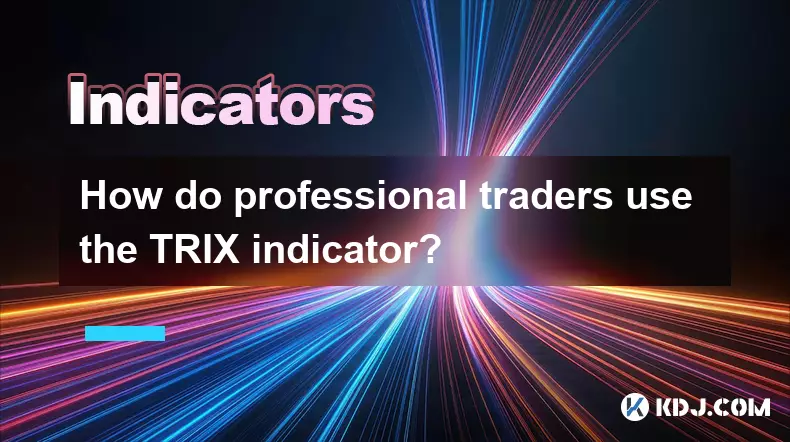
How do professional traders use the TRIX indicator?
Nov 06,2025 at 04:40pm
Understanding the TRIX Indicator in Crypto TradingThe TRIX (Triple Exponential Average) indicator is a momentum oscillator used by professional trader...
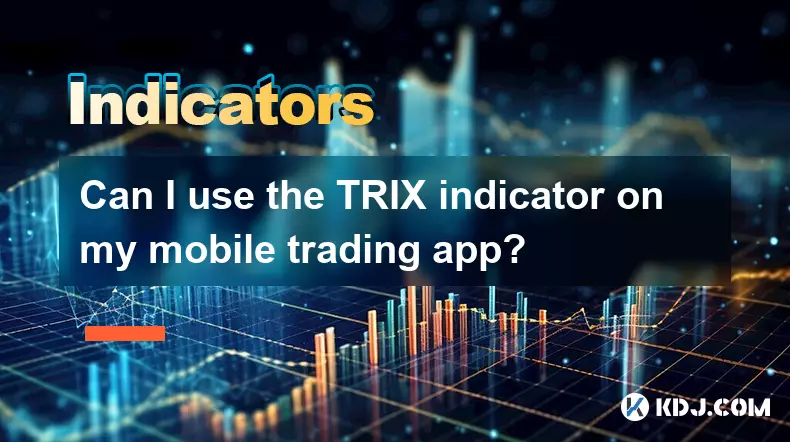
Can I use the TRIX indicator on my mobile trading app?
Nov 07,2025 at 07:40pm
The TRIX indicator, a momentum oscillator designed to filter out short-term fluctuations and highlight long-term trends, has become increasingly popul...
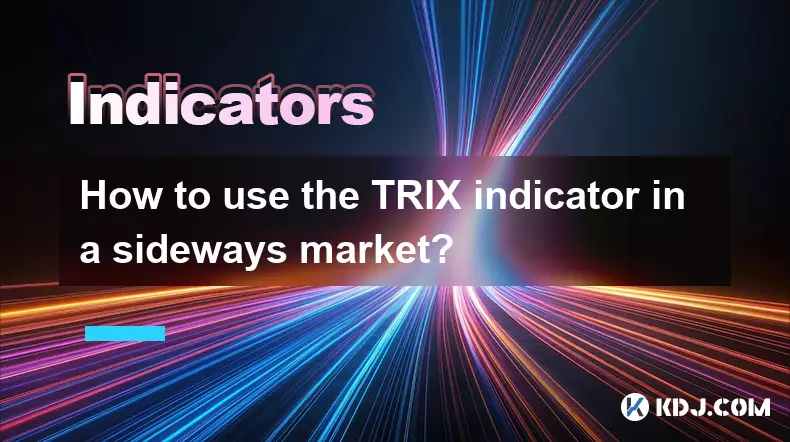
How to use the TRIX indicator in a sideways market?
Nov 10,2025 at 03:00pm
Bitcoin’s Role in Decentralized Finance Evolution1. Bitcoin remains the cornerstone of decentralized finance, serving as both a store of value and a b...
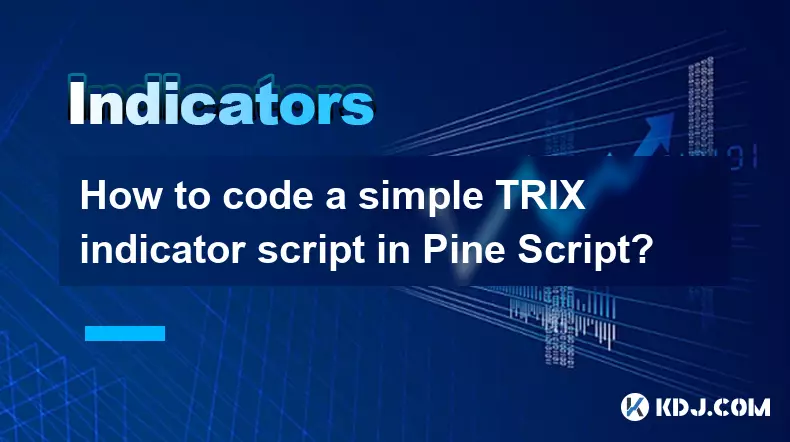
How to code a simple TRIX indicator script in Pine Script?
Nov 07,2025 at 06:20am
How to Code a Simple TRIX Indicator in Pine Script The TRIX (Triple Exponential Moving Average) indicator is widely used in cryptocurrency trading to ...
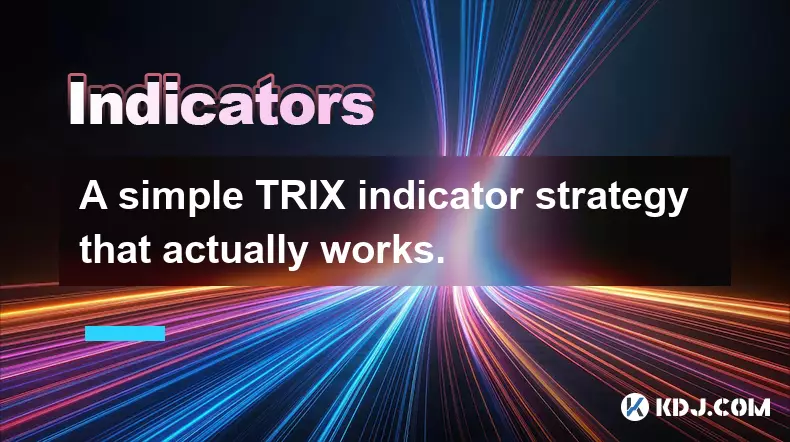
A simple TRIX indicator strategy that actually works.
Nov 08,2025 at 05:39pm
Understanding the TRIX Indicator in Crypto Trading1. The TRIX (Triple Exponential Average) indicator is a momentum oscillator designed to filter out s...

What's the best way to learn the TRIX indicator?
Nov 10,2025 at 12:39pm
Understanding the Basics of the TRIX Indicator1. The TRIX (Triple Exponential Average) indicator is a momentum oscillator designed to filter out short...

How do professional traders use the TRIX indicator?
Nov 06,2025 at 04:40pm
Understanding the TRIX Indicator in Crypto TradingThe TRIX (Triple Exponential Average) indicator is a momentum oscillator used by professional trader...

Can I use the TRIX indicator on my mobile trading app?
Nov 07,2025 at 07:40pm
The TRIX indicator, a momentum oscillator designed to filter out short-term fluctuations and highlight long-term trends, has become increasingly popul...

How to use the TRIX indicator in a sideways market?
Nov 10,2025 at 03:00pm
Bitcoin’s Role in Decentralized Finance Evolution1. Bitcoin remains the cornerstone of decentralized finance, serving as both a store of value and a b...

How to code a simple TRIX indicator script in Pine Script?
Nov 07,2025 at 06:20am
How to Code a Simple TRIX Indicator in Pine Script The TRIX (Triple Exponential Moving Average) indicator is widely used in cryptocurrency trading to ...

A simple TRIX indicator strategy that actually works.
Nov 08,2025 at 05:39pm
Understanding the TRIX Indicator in Crypto Trading1. The TRIX (Triple Exponential Average) indicator is a momentum oscillator designed to filter out s...
See all articles










































































